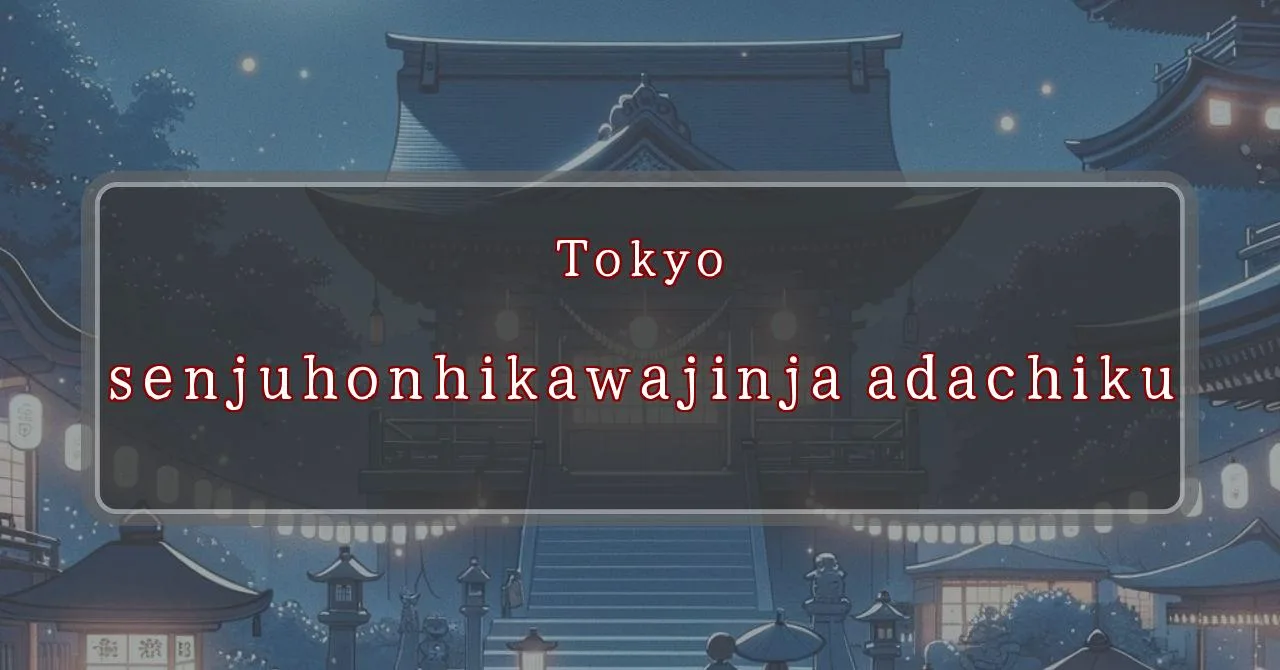Enchanting melodies and divine processions: A glimpse into Senju’s grand festival
Basic Information
Senju Hontenjinja Shrine is a Shinto shrine located in Adachi Ward, Tokyo, Japan.
- Address: 3-22 Senju, Adachi-ku, Tokyo 120-0034
- Phone Number: 03-3881-2857
- Access: 5-minute walk from Kita-Senju Station, JR East Joban Line, Tokyo Metro Chiyoda Line, Hibiya Line, Tobu Isesaki Line, Tsukuba Express
- Festival Days: September 8th (Sat), September 9th (Sun), 2024
Main Events and Attractions of the Festival
The Senju Hontenjinja Shrine Festival is a two-day festival held annually on September 8th and 9th. The festival features a variety of events and attractions, including:
Mikoshi Procession
The highlight of the festival is the mikoshi procession, where portable shrines are carried through the streets of Senju. The mikoshi are elaborately decorated and weigh several hundred kilograms. They are carried by teams of people, who chant and dance as they make their way through the streets.
Bon Odori Dance
Another popular attraction of the festival is the Bon Odori dance. This traditional Japanese dance is performed by people of all ages, and it is a great way to experience Japanese culture. The Bon Odori dance is typically performed in a circle, and the dancers wear colorful happi coats.
Food Stalls
The festival also features a variety of food stalls, where visitors can enjoy a variety of Japanese dishes, such as yakitori, takoyaki, and okonomiyaki. There are also a number of souvenir stalls, where visitors can purchase traditional Japanese crafts and goods.
Fireworks Display
On the evening of September 9th, the festival concludes with a spectacular fireworks display. The fireworks are launched from the banks of the Sumida River, and they light up the night sky with their vibrant colors.
Blessings and Deities
Senju Hontenjinja Shrine is dedicated to Susanoo-no-Mikoto, the god of storms, seas, and agriculture. He is also known as the younger brother of Amaterasu Omikami, the sun goddess and the most important deity in Japanese mythology.
Susanoo-no-Mikoto is a complex and multifaceted deity. He is often depicted as a wild and unruly god, but he is also known for his bravery and his ability to protect people from harm.
At Senju Hontenjinja Shrine, Susanoo-no-Mikoto is revered as a guardian deity who protects the local community from disasters and misfortunes. He is also believed to bring good luck and prosperity to those who worship him.
Origin and History
The origins of Senju Hontenjinja Shrine are unclear, but it is believed to have been founded in the early Edo period (1603-1868). The shrine was originally located in a different part of Senju, but it was moved to its current location in 1872.
The shrine has undergone several renovations over the years, but the main building dates back to 1970. The shrine is also home to a number of important cultural artifacts, including a wooden statue of Susanoo-no-Mikoto that is designated as a tangible cultural property of Adachi Ward.
Tips and Notes for Visitors
Senju Hontenjinja Shrine is a popular destination for both domestic and international visitors. Here are a few tips and notes for visitors:
- The shrine is open daily from 9:00 AM to 5:00 PM.
- Admission to the shrine is free.
- There is a small parking lot available for visitors.
- The shrine is a popular spot for weddings and other ceremonies, so it is best to avoid visiting during these times.
- The shrine is located in a residential area, so please be respectful of the neighbors.
Parking Information
There is a small parking lot available for visitors to Senju Hontenjinja Shrine. The parking lot is located on the north side of the shrine, and it can accommodate about 20 cars.
The parking lot is free of charge, but it is often full during popular times. If you are unable to find a parking space in the shrine’s parking lot, there are a number of public parking lots located nearby.
Popular Stalls and Food Carts in Recent Years
| Type of Stall | Description |
|---|---|
| Takoyaki | A staple at Japanese festivals. Characterized by a crispy outside and a creamy inside. |
| Jaga Butter | A simple yet popular snack of hot potatoes lavishly topped with melted butter. |
| Baby Castella | Small castella cakes, sweet and fluffy treats enjoyed by children and adults alike. |
| Grilled Ayu with Salt | Fresh ayu fish grilled whole with salt, a savory taste of Japanese summer. |
| Shaapin | A unique gourmet item influenced by foreign cuisine, with a chewy skin wrapping the filling. |
| Okonomiyaki | A Japanese grilled dish where you often choose your own ingredients for a personalized flavor. |
| Cotton Candy | A fluffy, sweet snack that’s extremely popular with children. |
| Chocolate Banana | A banana coated in chocolate, a fun and visually appealing dessert. |
| Kushiyaki | Various types of ingredients skewered and grilled, an easy-to-enjoy snack. |
| Yakisoba | Fried noodles mixed with a special sauce, a fast food favorite in Japan. |



